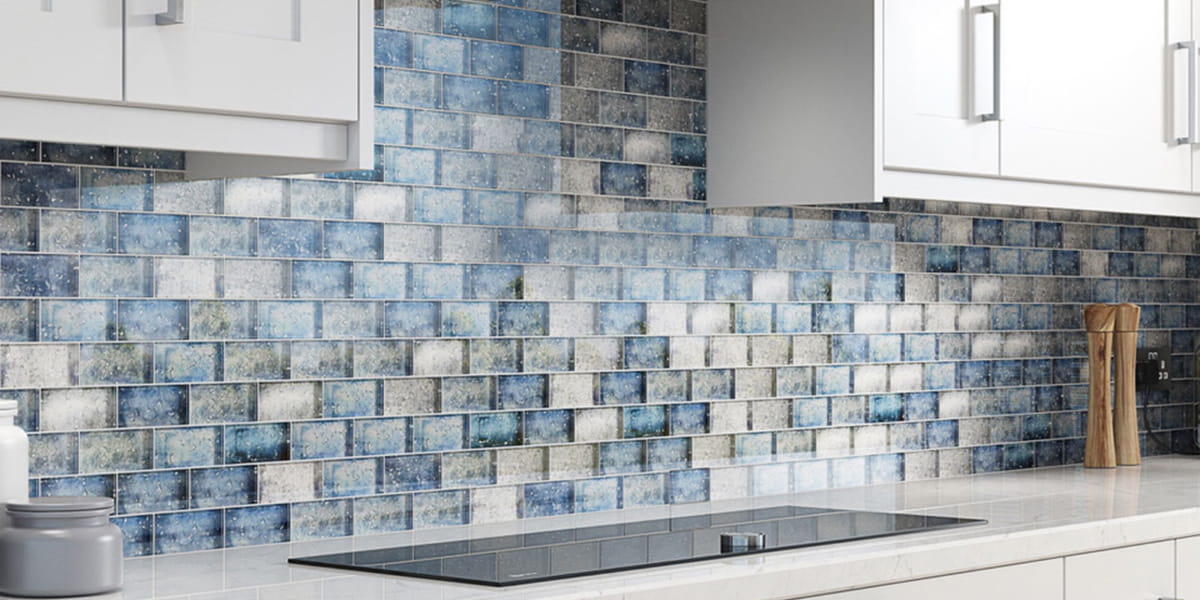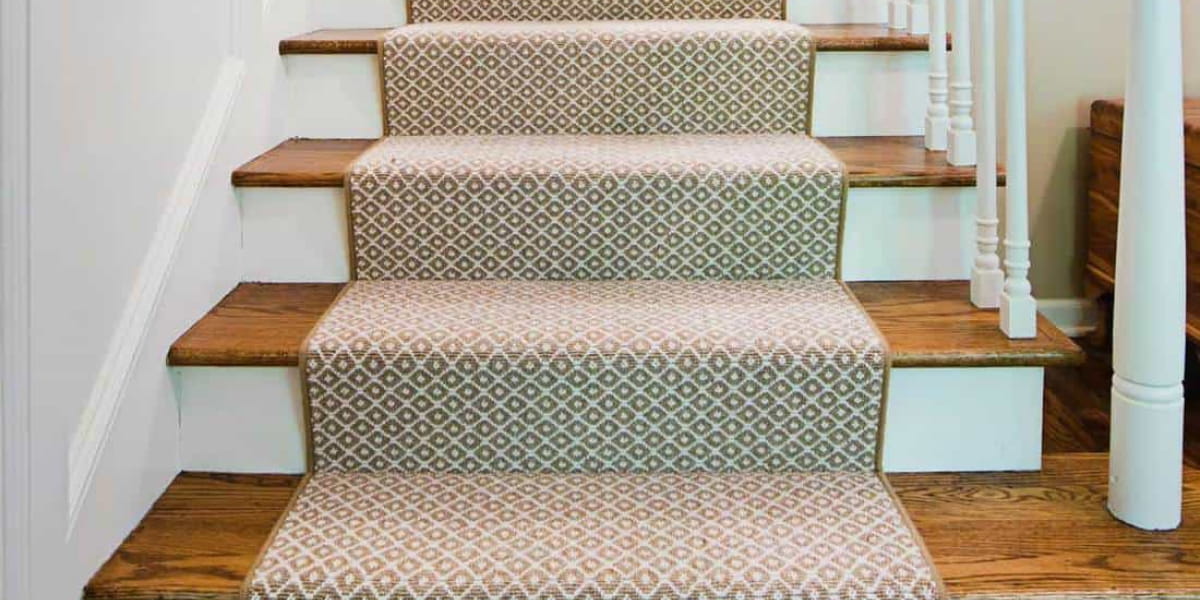Published on July 22nd, 2022
Last updated on February 6th, 2023
Staining And Sealing A Deck On Your Own: Complete Guide
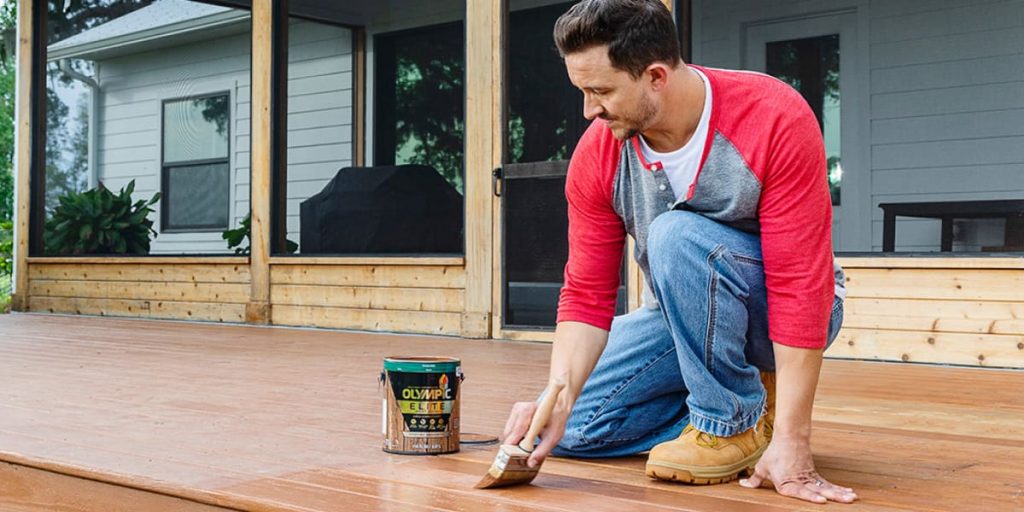
It is known that any dead matter is inevitably destroyed by microorganisms. And wood is no exception. It is exposed to daily weather or seasonal heating, cooling, moisture, weathering, drying, and destructive action of microorganisms. The ubiquitous presence of fungal microflora, or natural infection, gives rise to chronic biodegradation, the rate of which directly depends on the operating conditions of the wooden structure. The main reason for wood’s biological degradation is the moisture level suitable for the destroyers (fungi or insects). So it is vital to know how to stain and seal a deck.
The optimal moisture content of wood for the active development of the biodegradation process is from twelve to twenty-four percent. This range is reached when structurally or chemically unprotected wood is used in harsh conditions in direct contact with soil constantly moistened by atmospheric precipitation. As a rule, details of fences, columns, piles, and lots of wooden floors are subject to chronic biodegradation. There, the best way to pretend all kinds of wood biodegradation is deck staining and sealing.
Deck Sealer And Stainer: Definition And Difference
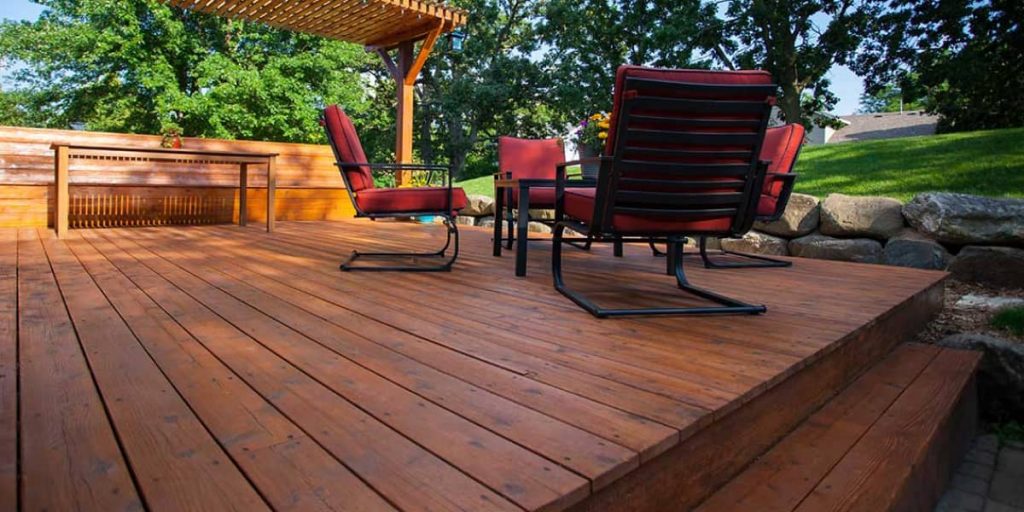
The stainer is a special liquid for deep impregnation of wood, giving color to precious wood species. It does not create a film like paints and varnishes but impregnates and emphasizes the structure of wooden products. There is a distinction between water, acrylic, oil, and alcohol-based stains. The stain does not have strong protective properties, so the surface should be varnished as intended. If it is a floor, it is suitable parquet varnish, if the external works – facade varnish, internal works – panel. It all depends on the purpose of the object. But also, we note that the composition of stains adds antiseptics, and wax, which helps keep the material longer. In addition, imparting color is an important component of protection against UV light.
The sealer has a more complex spectrum of protection. It is used to prevent damage caused by weather conditions, especially moisture and UV rays. Different types of sealers are transparent liquids, which can be divided into film-forming (against sunlight, moisture, and mildew) and non-film-forming (against fungus, mildew, and insects). Impregnation should be applied on a dried surface that is not affected by mold or insects. One of the main indicators of impregnation – is penetration ability: the deeper the impregnation is able to penetrate into the pores of the wood, the better protection it will provide. A sprayer or brush is usually used to apply the impregnation evenly.
So, the main difference between these two types of deck wood treatment coatings is the purpose of use and desired effect.
How To Prepare The Surface For Staining?

The beauty and aesthetics of the finish depend not only on the quality of the stain but also on a properly prepared surface. It should be smooth, silky, and without scratches and other defects. Preparation for staining includes:
- thorough cleaning of a deck from dust, dirt, grease stains, and then staining;
- removal of old paint coating;
- sanding;
- testing paint.
It is important for the home craftsman to know that sanding is always done along the fibers. In the first stage, you should use medium-grained sandpaper; in the second is fine abrasive. If the furniture or other parts are made of coniferous wood, they must be prepared with a special composition. Grease stains are removed with a cloth soaked in alcohol or white spirit. Traces of carpentry glue can easily be removed with hot water.
When the first three conditions of preparation for staining are fulfilled, it is necessary to do a test staining on a separate piece of board. It will help you to choose the right color and its intensity. Applying stain and seal on a dry, clean, smooth deck is the key to a quality, beautiful finish.
Selecting Desired Shade For Wood
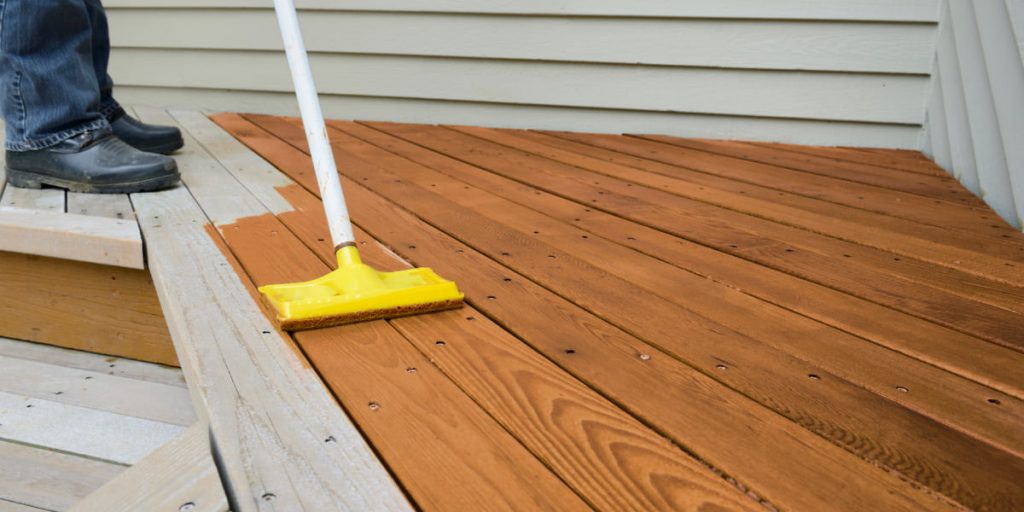
The result depends on the structure and density of the wood and its chemical composition. That is why after purchase, the material should be tested on invisible areas of the surface to be treated or on a separate board.
Test staining is an important moment to help you choose the right color and shade of coating. What is the best way to do it? The easiest way is by comparison:
- The first layer of stain should be applied to the board selected as a sample;
- Wait for it to dry completely, and cover 2/3 of the board with the second coat;
- Follow the same scenario with a third coat of stain.
This way, you can see the difference in the intensity of staining with a different number of coats and choose a suitable option. This method often comes in handy when furniture or room finishes are combined from different materials, such as solid wood and plywood.
Whole pieces of wood look darker after staining with a stain, so more layers will have to be applied to plywood parts to even out the color. Deciduous woods absorb more stain, conifers less.
Methods Of Staining Treatment
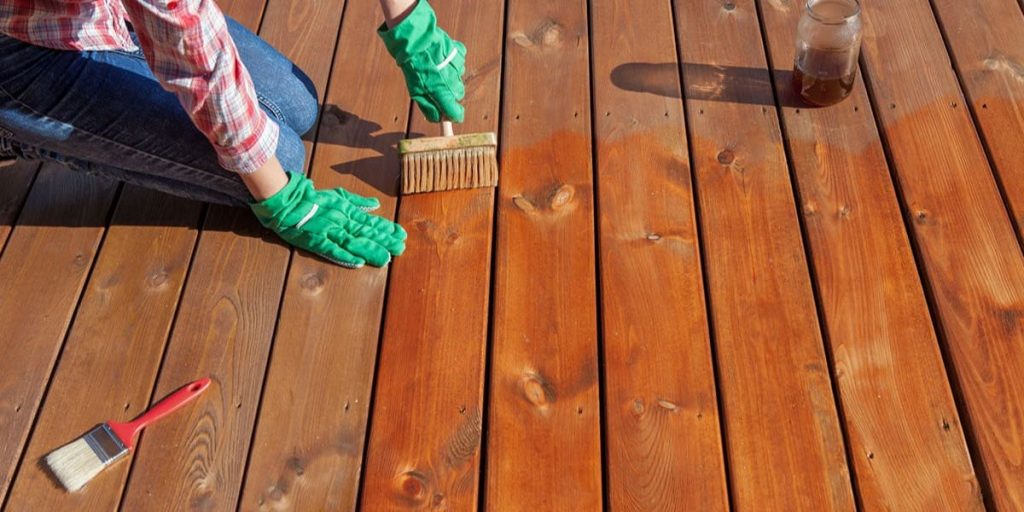
To give more decorativeness and aesthetics to wood products, you should follow specific rules when creating a deck. Tools play an essential role in the quality of the final result.
Quick-drying alcohol-based compounds require a spray gun, and elite acrylics require a broad brush with natural bristles, for which an inexpensive foam roller or brush with synthetic bristles is sufficient. For small surfaces, a simple foam pad is also suitable.
When working with a brush, it is essential not to overstep adjacent areas that have already been stained with streaks. Failure to follow this simple rule may cause uneven staining, streaks, and smudges.
There are two generally accepted ways to treat wood with stain:
- Profuse application of the composition, followed by removal of excess liquid with a tampon;
- Massive application of the stain substance without removing the excess.
The first method is popular for water stains. It allows you to remove stains and stains, and smooth out color transitions to achieve the desired brighter shade.
The second method is actual for solvent-based stains with deeply saturated colors. Sometimes, it is also necessary to remove the excess of the composition to prevent the formation of defects.
Work With Defects
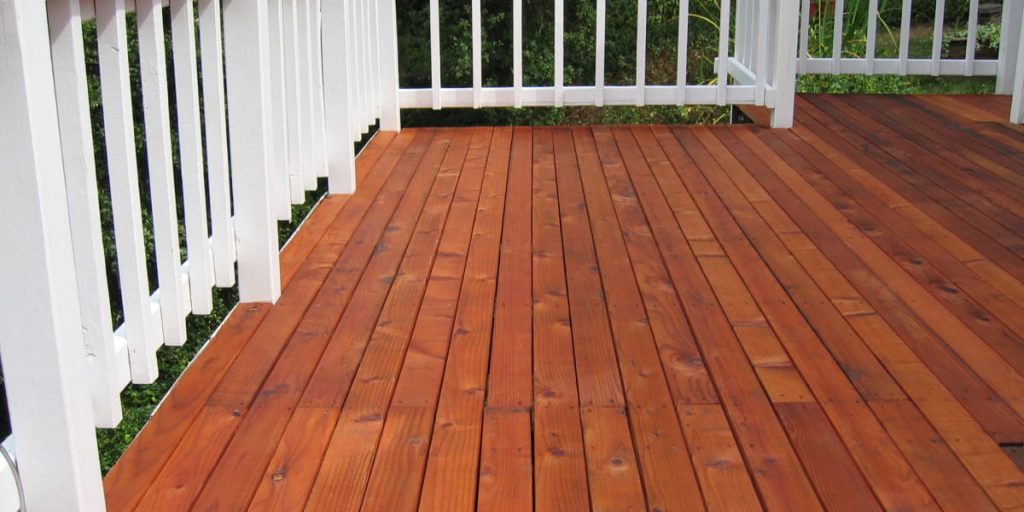
The most common defects significantly spoiling the quality of stain and seal finishes are streaks and smudges on decks. They most often accompany the actions of beginners and careless craftsmen who forget that a small amount of batter on the brush and application of a thin coat is the best way to prevent smudges and blotting. Correcting embarrassing mistakes is much harder than avoiding them.
It is impossible to wash stains on wood, so defects are eliminated with sandpaper or a planer. So, it is essential to do cleaning the wood deck before staining. Carefully removing the thin shavings and smoothing out the transitions in the problem area, you can get rid of flaws.
Defects in the finish can also occur as a result of poor preparation of the wooden surface. A good stain will not decorate furniture or other wood products with poorly executed sanding, residual grease, and resin stains. The work will have to start from scratch, that is, with the preparation for staining.
How To Prepare The Deck For Sealing?
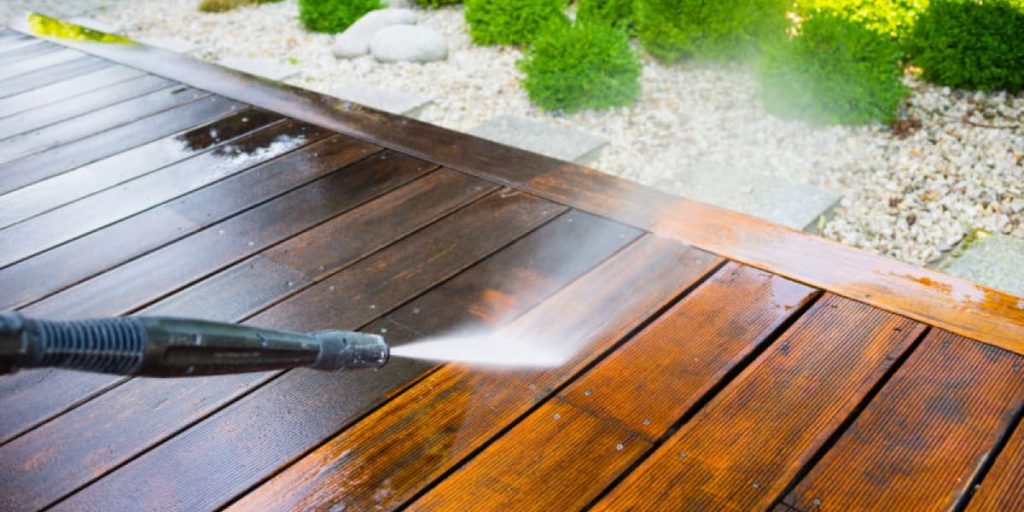
The service life of any protective and decorative composition depends largely on the quality of surface preparation. It includes:
- thorough cleaning of dust and dirt, stains, and streaks;
- removal of old paint materials (with scrapers, brushes with metal bristles, construction hair dryer);
- wood sanding. Pay special attention to this stage is recommended, as it guarantees good adhesion of the impregnation with the surface, i.e., durability of processing and preservation of wood.
The surface should be prepared in several stages: the wood is sanded before coating and after drying each layer. Remember that sanding should be carried out along the fibers of the wood. When pre-sanding, you should start with sanding sandpaper with a grain size of 200 – 250 microns (P80) to smooth out the traces of the cutting tool. Then you should use a grinding material with a finer grit of 80-100 microns (P150). Clean off dust thoroughly.
Which Application Method To Use?
The wood impregnation can be applied in any convenient way:
- By dipping with specialized machines and lacquer-dispensing machines. Impregnation is a material of deep penetration. This method of application in one layer produces a coating with maximum protective properties and color intensity;
- Paint sprayers. It is the most convenient tool for processing large areas, such as wooden houses. Impregnation, applied with a sprayer, forms a perfectly smooth, uniform film on the surface of the wood. Such a coating is considered the highest quality. When choosing between the pneumatic and airless paint sprayer, we recommend settling on the pneumatic: it provides a higher quality of painting;
- Painting rollers. Sufficiently convenient to work: the roller allows you to cover a large area in one movement, which saves time and effort;
- Brushes. It is more convenient to paint large surfaces with wide brushes – from 100 mm.
Instructions For Treating A Deck With Sealing
You may find more precise instructions below:
1. The wood impregnation should be thoroughly mixed before application;
2. It is recommended to treat surfaces at an air temperature not lower than +18 °C and not higher than +28 °C. At the same time, the temperature of the composition itself should be at least 15 °C;
3. The surface of the wood should be dry. Applying impregnation after rain is not recommended; you must wait until the wood is completely dry;
4. Recommended quantity of layers is two or three. Drying time between coats is about two hours. Complete drying of the coating comes in approximately twenty-two hours after application of the finish coat.
Bottom Line
Remember that wood is a somewhat fragile building material, which must be treated before use. This article describes two methods in detail: deck staining and sealing. Before you buy an impregnation, evaluate its pros and cons, check the container’s reliability, and ensure that it is not fake. If possible, get advice from a company representative and only then make a choice. Use our other guide for full deck restoration.
FAQ
How To Choose A Product For Living Rooms?
Environmental friendliness is the main factor when choosing a preparation for finishing bedrooms and children’s rooms. Therefore, you need to take water-based fluids.
How To Calculate Staining Consumption?
Consumption is about 100-120 g/m2. To calculate the necessary amount of material, multiply this figure by the surface area you need to treat. Take into account the technological losses: about ten percent of the material must be considered. The consumption of wood impregnation also depends on the way it is applied: a brush consumes the solution more economically, when using a spray gun, there are always certain losses for spraying. As a rule, it may be approximately an additional five to ten percent.
What Weather Is The Best Time To Work With Wood?
The first step in applying deck sealer is to ensure that you’ve got at least two days of dry weather with temperatures between 10-32 °С.
Is It Necessary To Reseal The Deck Stain?
Each stain you purchase will indicate whether it requires one coat or two coats. Most clear sealers up to and including translucent stains require only one coat. Single-color strainers usually require resealing a deck with two coats for normal stain coverage.
How To Choose A Quality Material?
Do not buy well-known brand impregnation at a reduced price – there is a high probability of a fake. Look at the information indicated on the packaging (region, manufacturer’s name).
Why Does My Deck Stain Peel?
Possible causes could be the use of softwood and rotten wood or sometimes the use of an improper staining system. Also, it may happen due to over-application and poor adhesion. Over application happens when you apply too much stain or too many coats, thus making a thick film more likely to peel. Poor adhesion happens when you don’t properly deal with cleaning your deck before staining or the wood has too much moisture in it.
How Often Do Seal And Stain Decks Need To Be Renewed?
It is almost impossible to answer unambiguously and accurately: the service life always depends on strict adherence to the instructions. In addition, it is difficult to predict the operating conditions of your particular wooden structure. Average figures suggest that, if applied correctly in several layers, the coating will not need to be renewed for up to 5 years.


